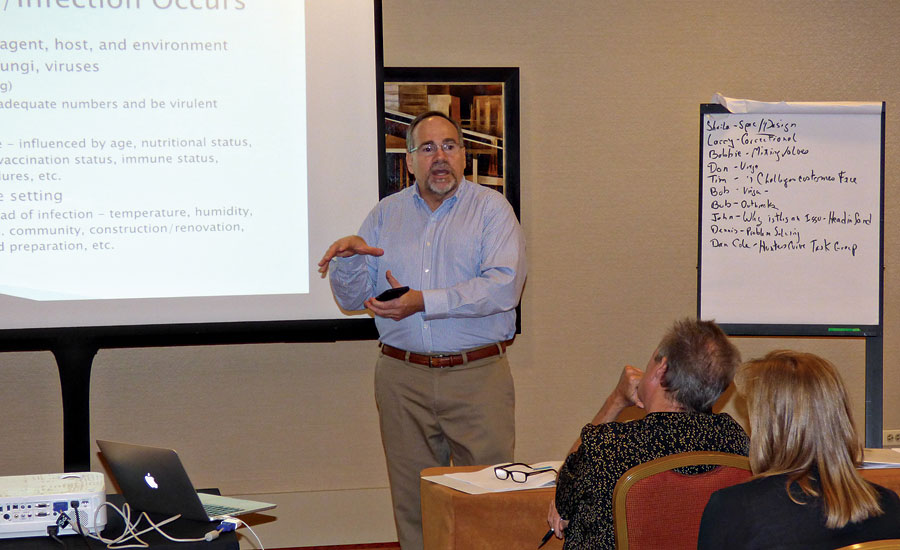Legionnaires’ disease captured national headlines when researchers determined it caused 34 deaths after an American Legion convention in1976 in Philadelphia. Since then, outbreaks of the disease barely make the 10 p.m. local news. While the Legionnaires’ disease is widespread, it frequently does not get the attention it deserves.
Recently published ASHRAE 188 is increasing focus on Legionnaires’ disease. The standard provides minimum Legionellosis risk-management requirements for the design, construction, commissioning, operation, maintenance, repair, replacement, and expansion of new and existing buildings as well as their associated potable and nonpotable water systems and components. The standard applies to human-occupied commercial, institutional, multifamily and industrial buildings. It does not include single-family homes.
Piping products manufacturer Viega also is shining a light on the disease through a series of educational workshops for plumbing industry professionals conducted by consultant Tim Keane of Legionella Risk Management. “Pathogen Control by Design” workshops took place this year in Miami, Washington, Chicago and Houston with one still remaining Oct. 22 in New York.
“Because Legionnaires’ disease does not appear in the news too often, people think the number of cases must be declining,” Keane said. “In fact, the annual incidence of cases has increased dramatically.”
During the workshop July 21 in Chicago, he cited a 219% rise in reported cases of the disease in the United States from 2000 to 2009 with an estimated 4,000 deaths annually. About 80% of 25,000 cases of Legionnaires’ disease each year go unreported, he said.
Another misconception is that only HVAC systems and components such as cooling towers cause the disease, Keane said. Outbreaks of Legionella have been sourced to potable water systems and components, such as showers, faucets, aerators and ice machines.
Contributing to the growth of the disease has been the increasing complexity of these components and plumbing system design, sometimes affected by new greener building codes.
“California will have a huge uptick in Legionella,” Keane predicted, due to more stringent flow restrictions on plumbing products.
Municipal water issues add to the problem with pipe breaks in deteriorating infrastructure around the country. Additionally, the nation’s aging population has put a greater number of people in at-risk categories of contracting the disease.
Researchers have linked Legionella to building construction and renovation, Keane said. About 25% of all Legionnaires’ disease outbreaks occur within one year of new construction and renovations.
While some states require new water systems to be disinfected prior to operation, he said, others do not. When a water system is disinfected, it is typically done when the plumber is finished with the installation, which may be up to four months before the building is occupied.
“This needs to be done within two or three weeks of occupancy,” Keane said.
Once a building is occupied and the water system operating, increasing water temperatures is the easiest way to prevent Legionella, he said. While building occupants must be aware of scalding due to hot water, they can’t overlook perhaps the even greater risk of Legionella colonization due to tepid water.
“Data shows water temperatures 125° to 130° F to be safe,” he said.
Along with education, Viega wants to provide building solutions to plumbing system designers and installers, said Jeff Gallagher, P.E., Viega’s Midwest technical manager. Besides addressing water temperature, systems must be designed to prevent water stagnation that results in the growth of pathogens. Such designs have to minimize dead legs in piping and incorporate fixtures with auto-purge features.
“Pathogen prevention will become an increasingly greater focus in water distribution design,” Gallagher said.




